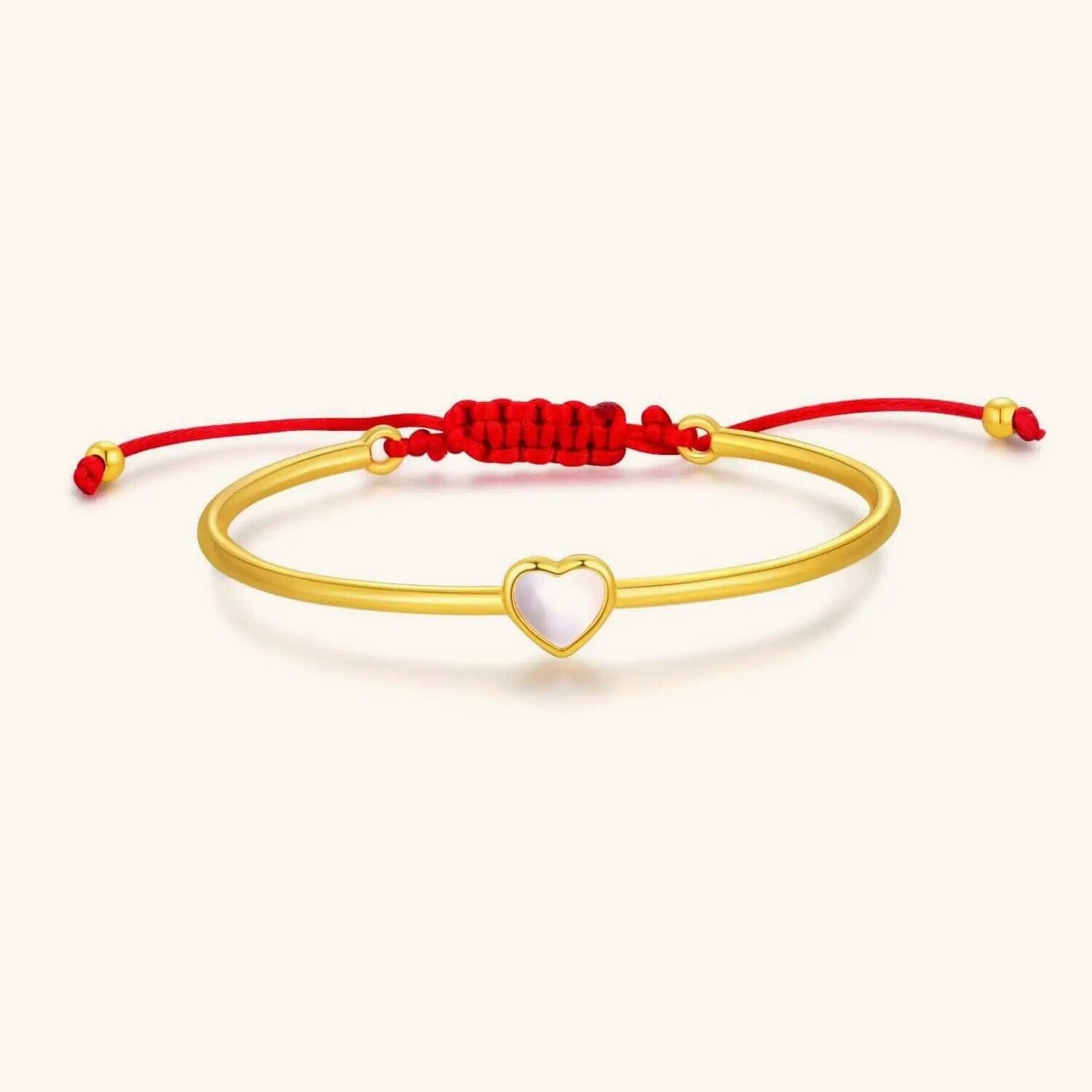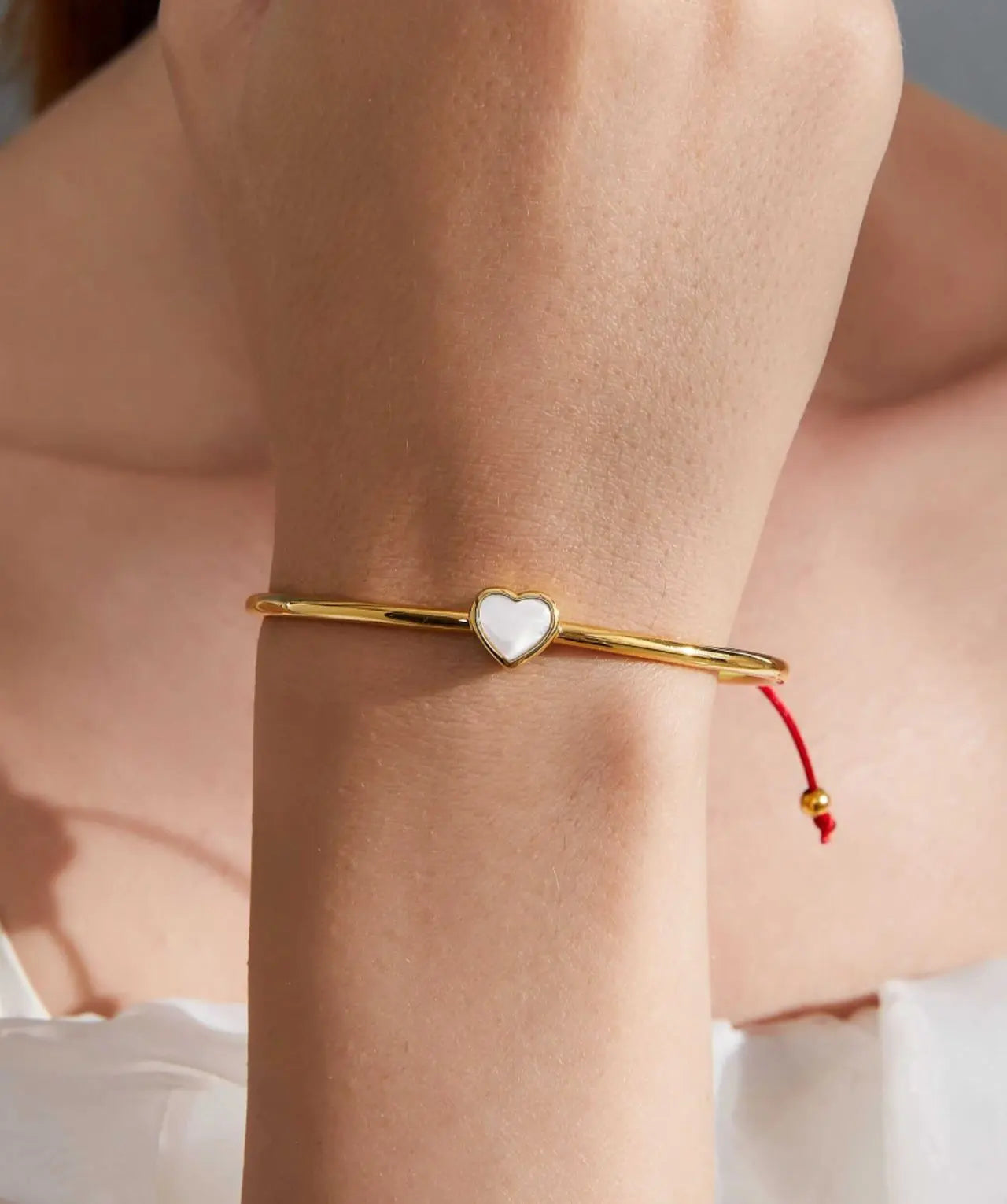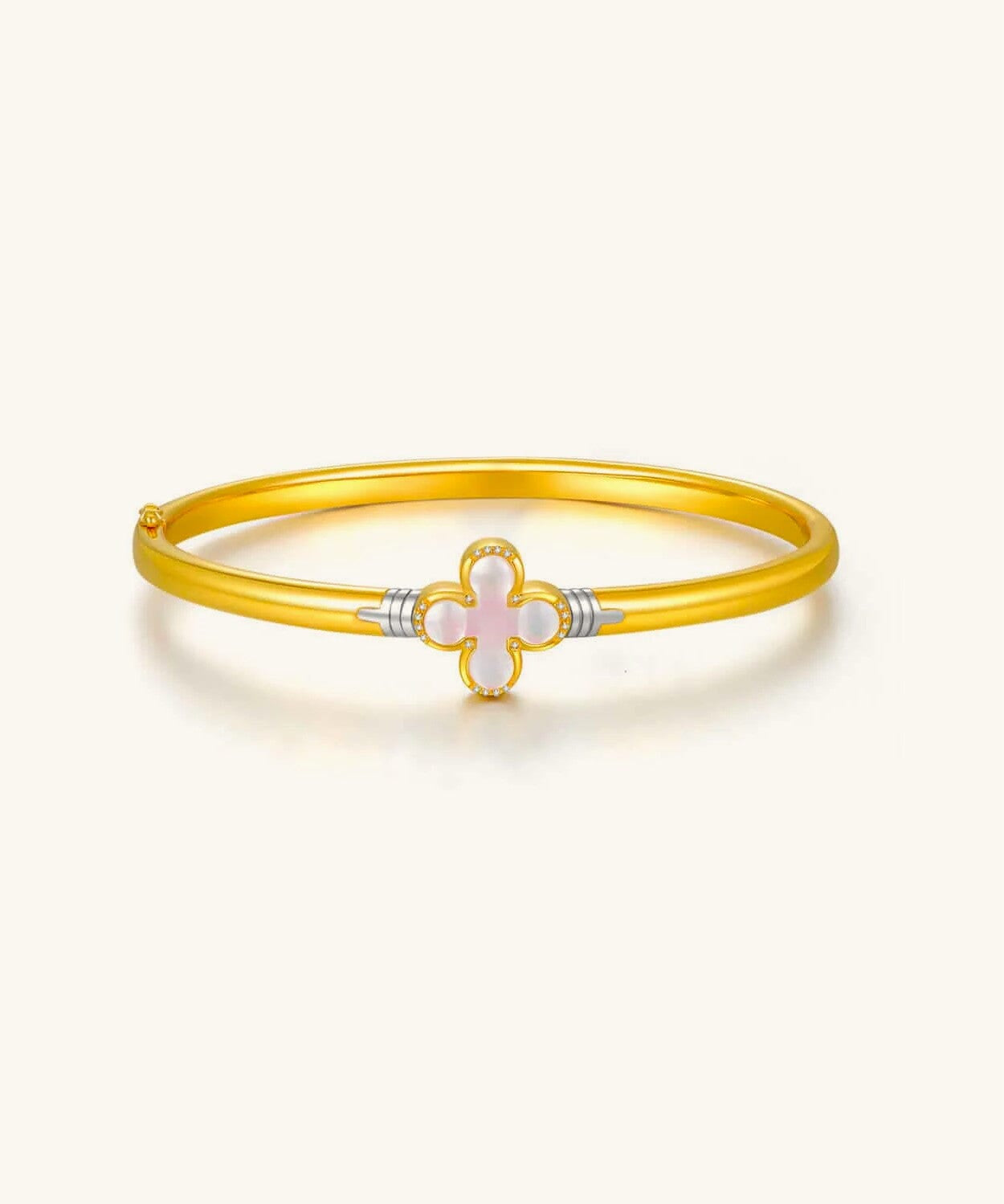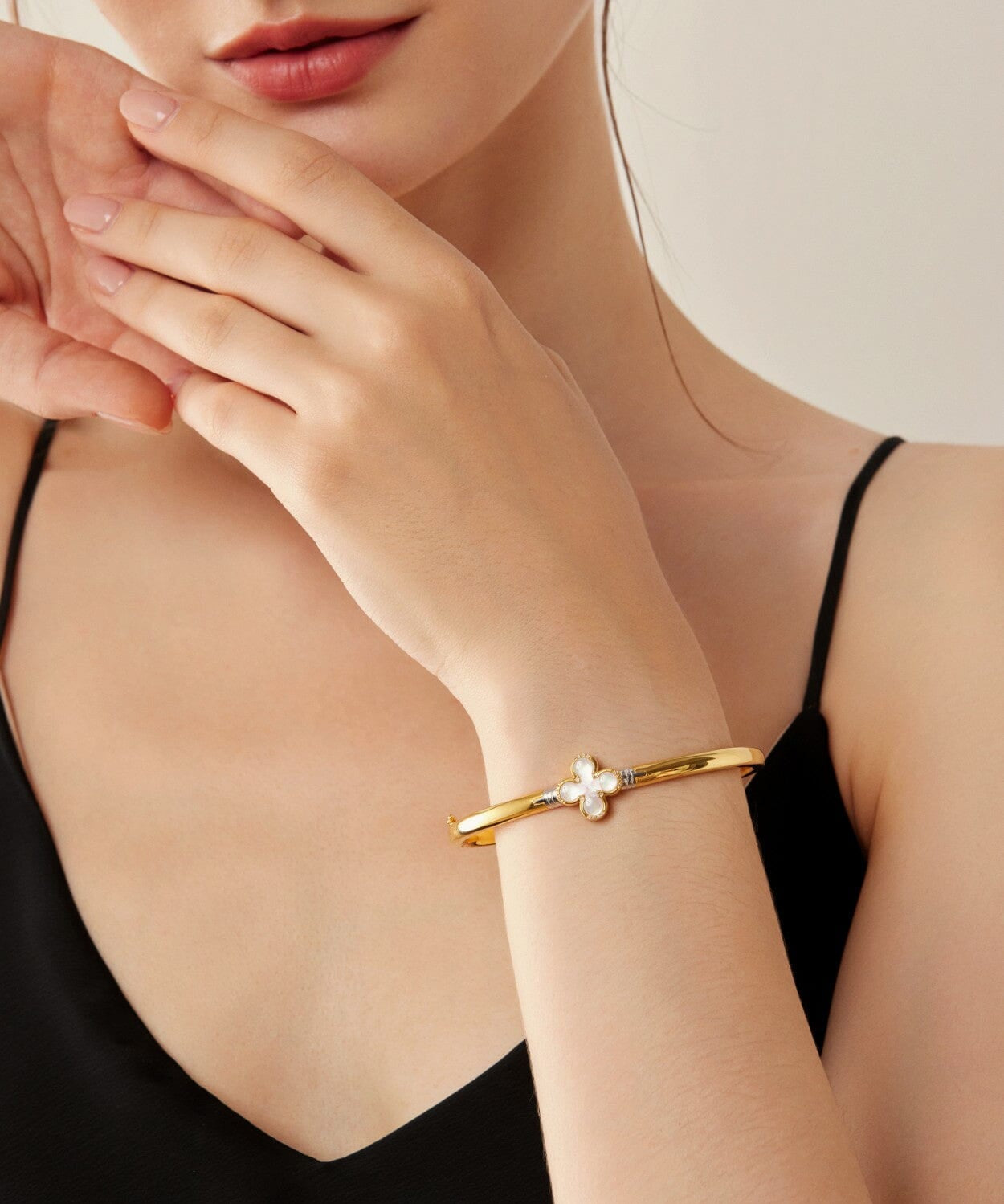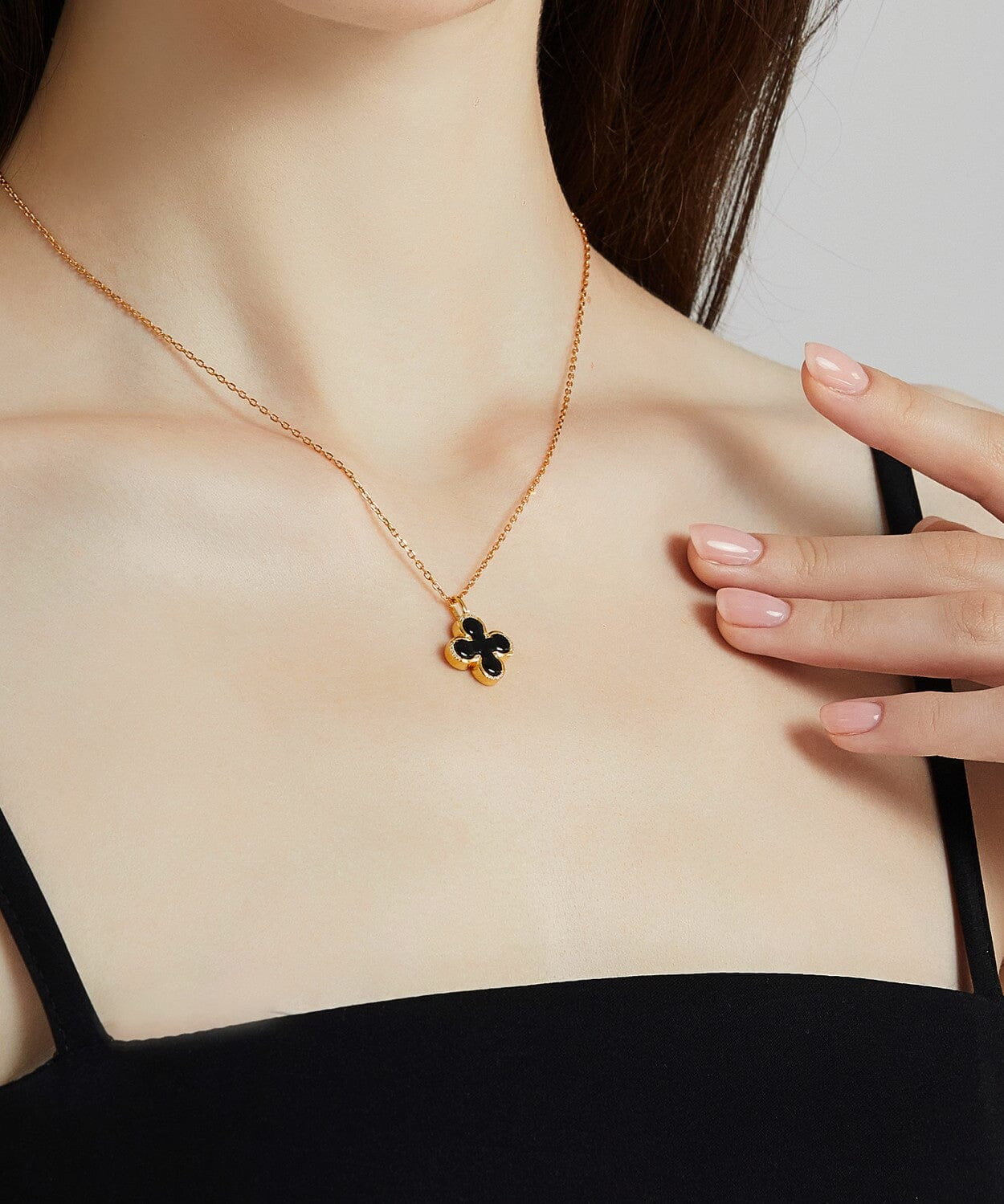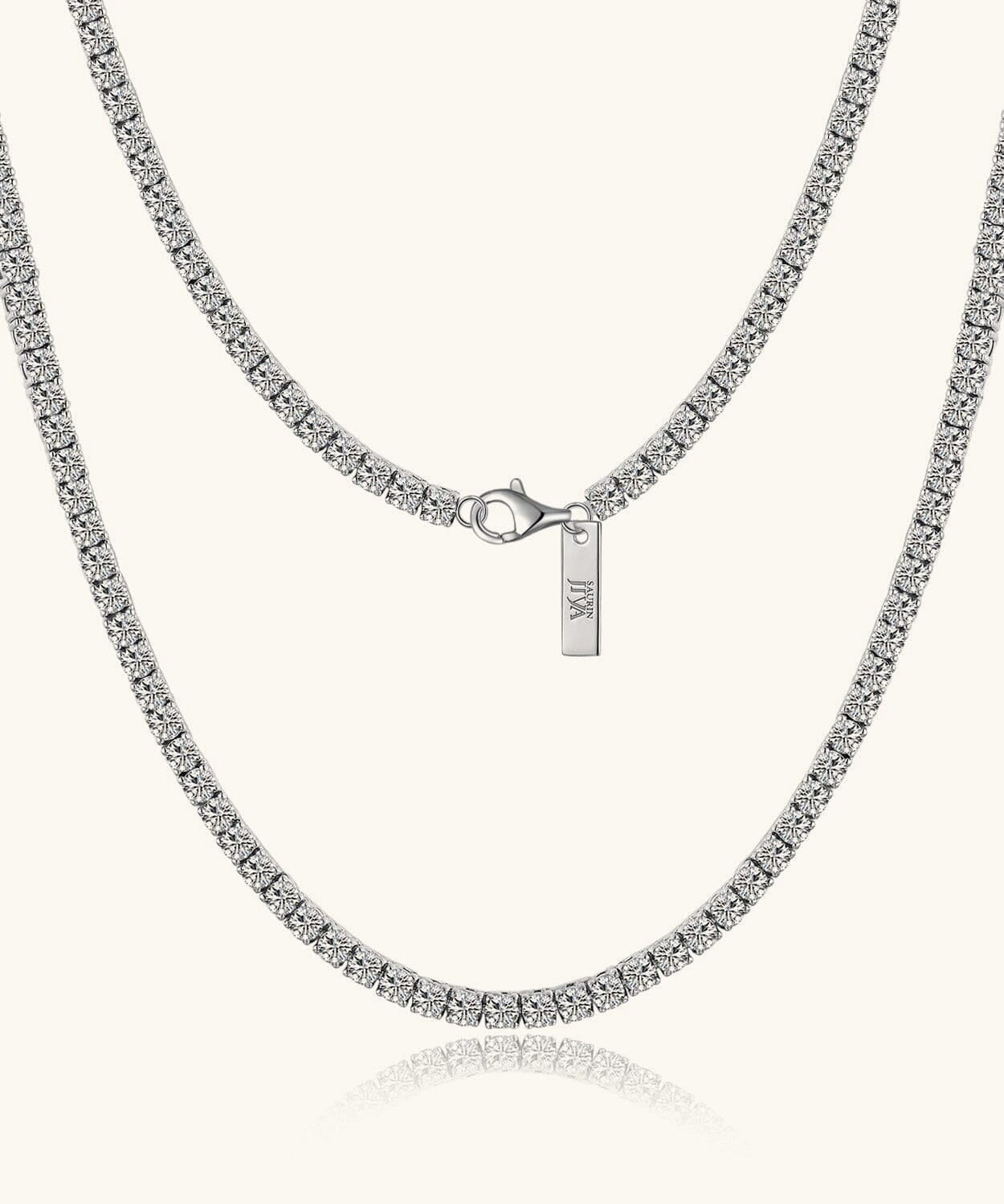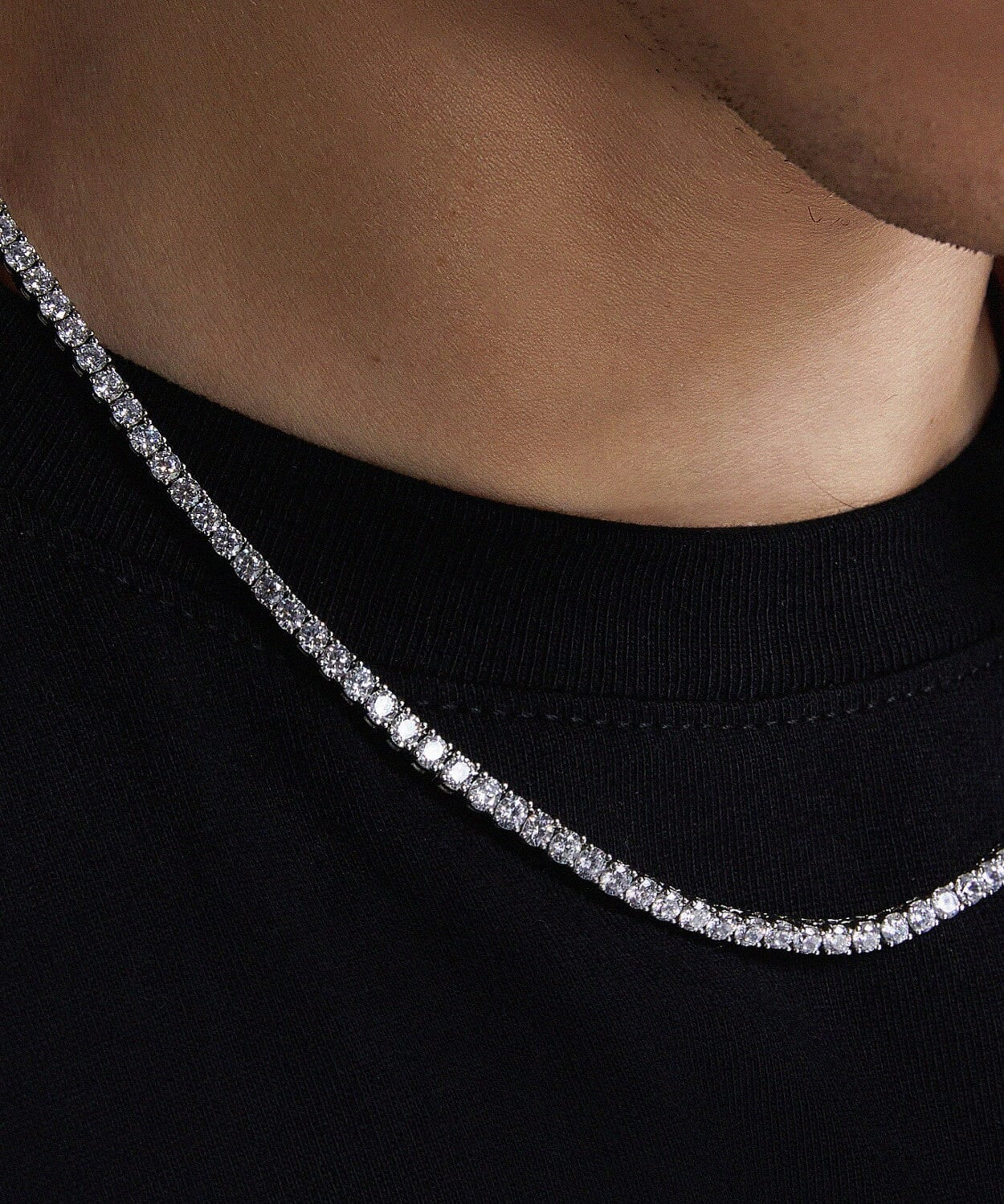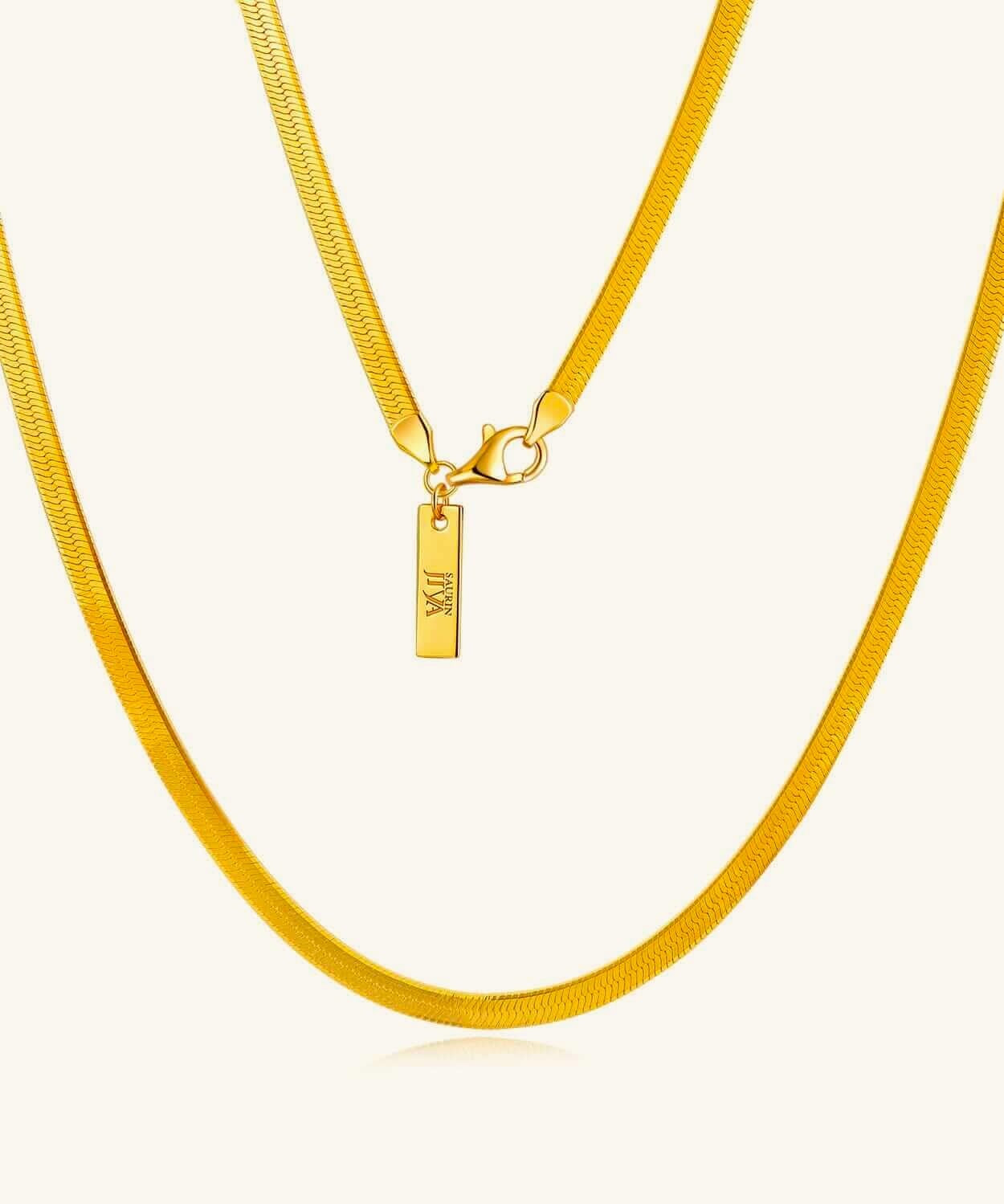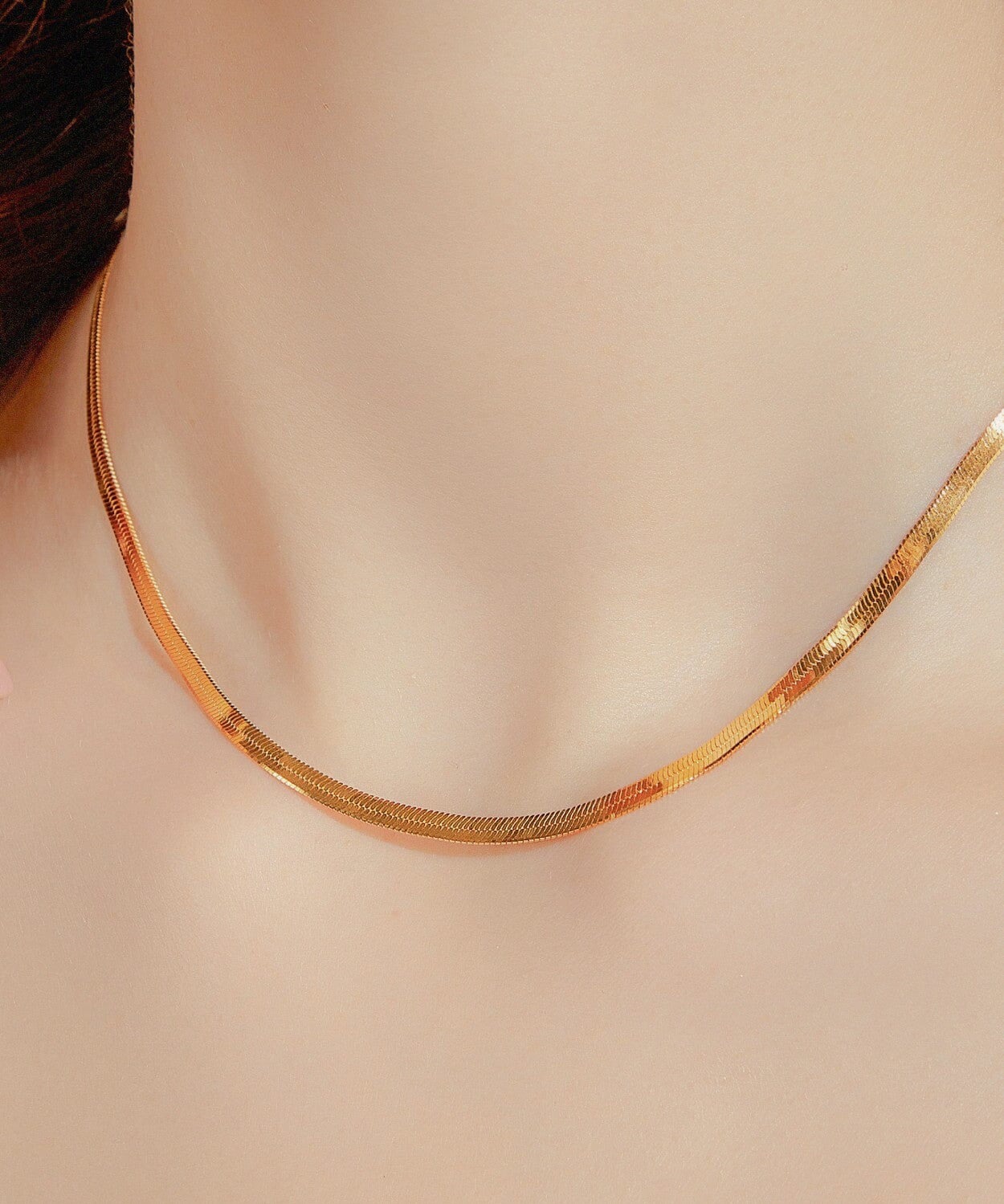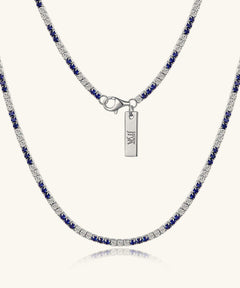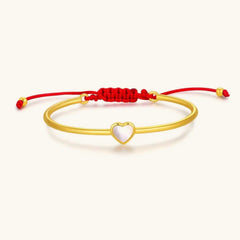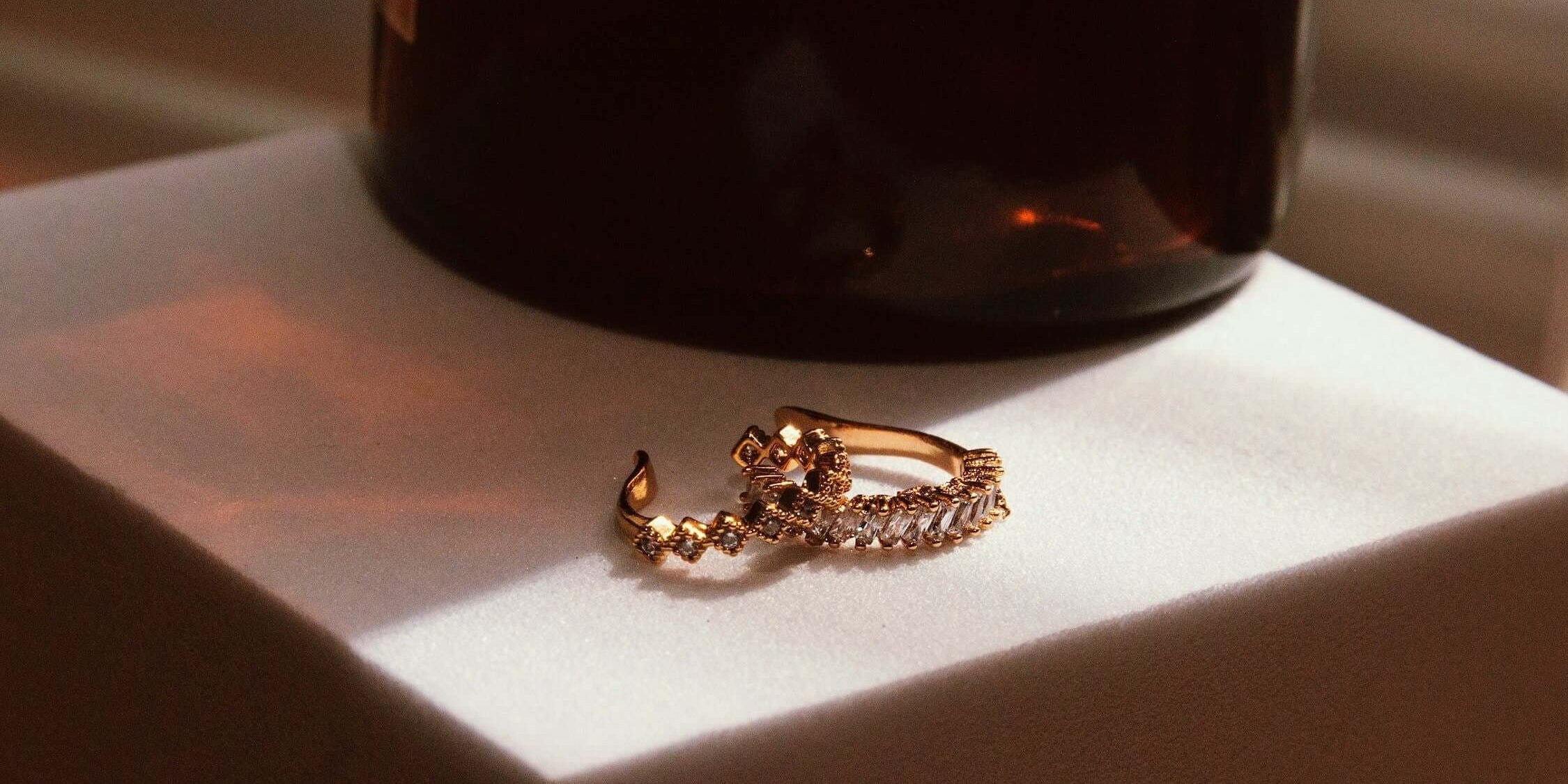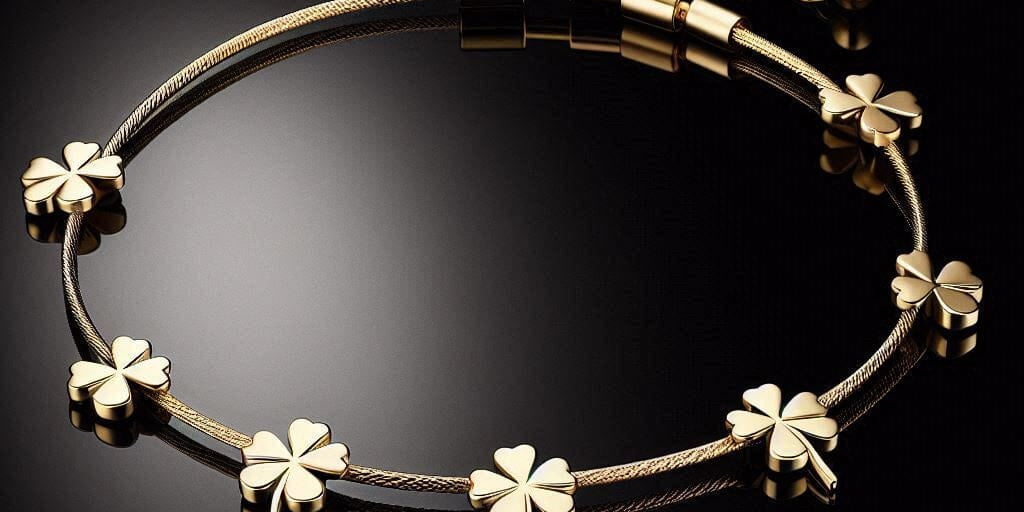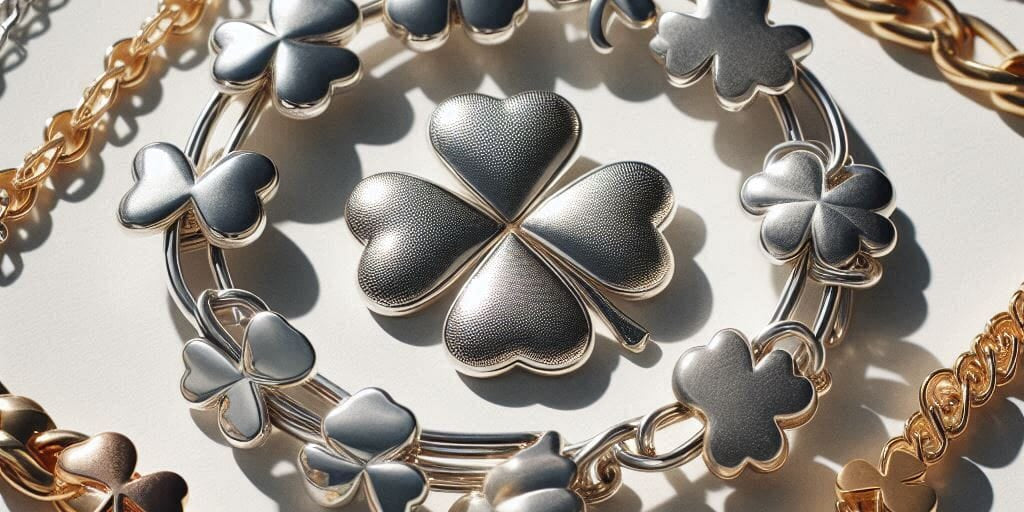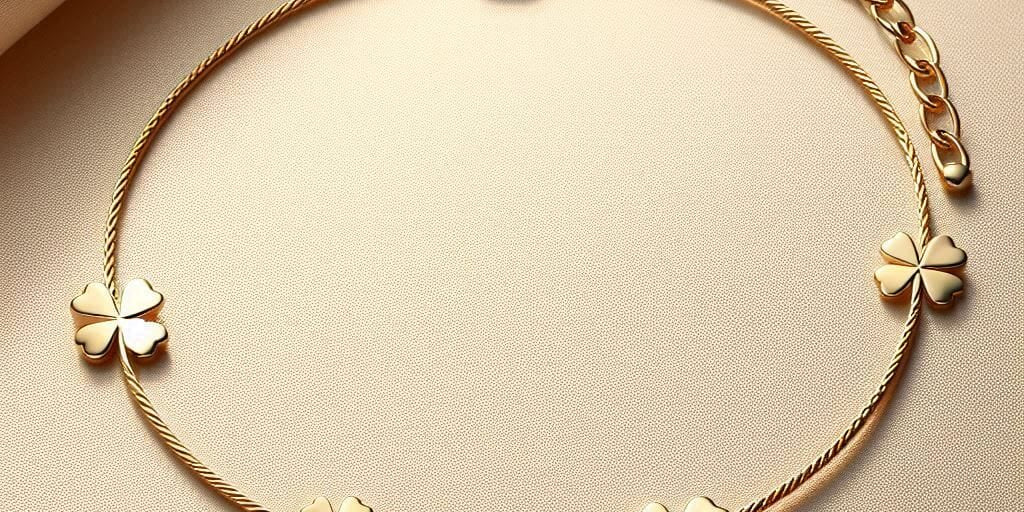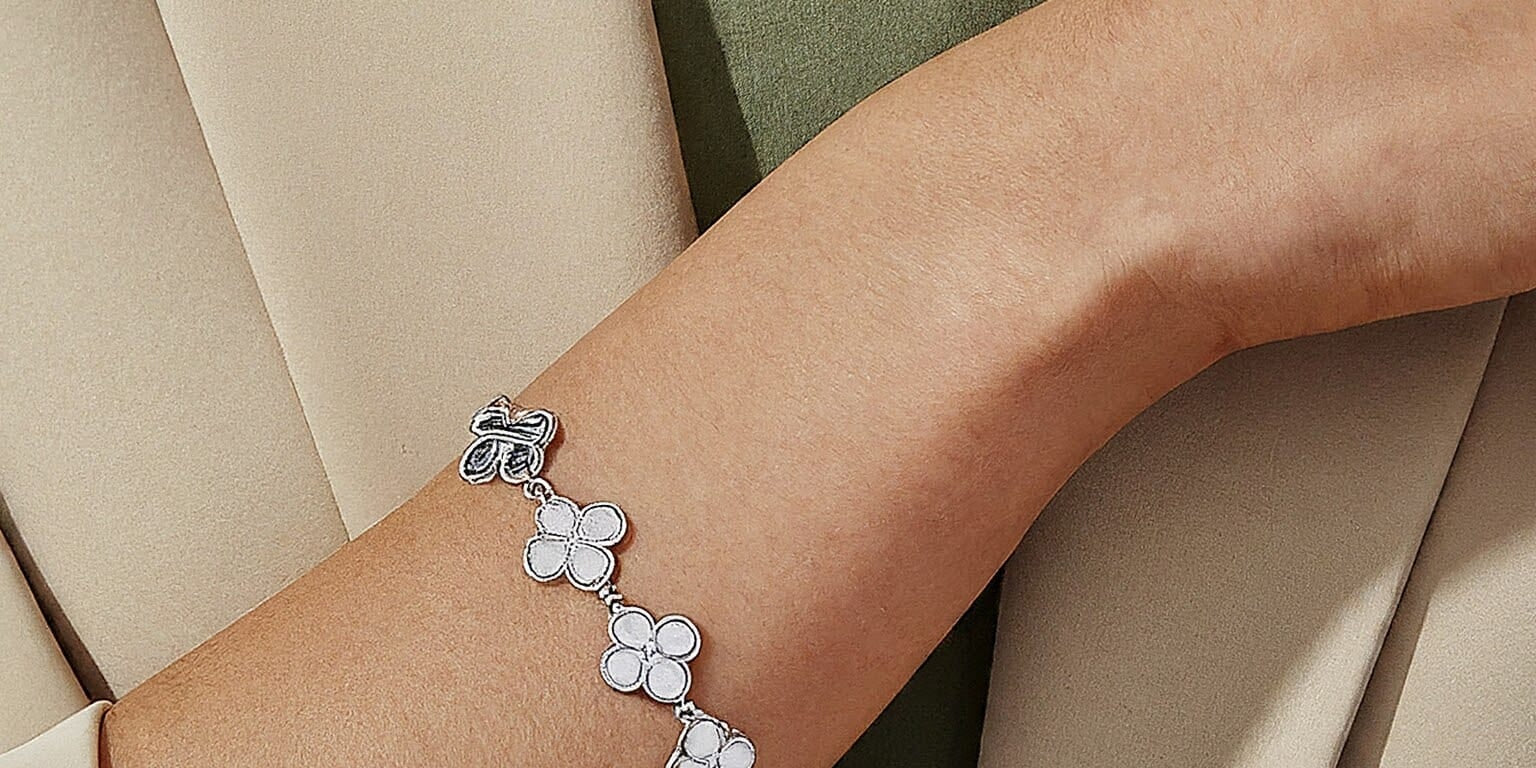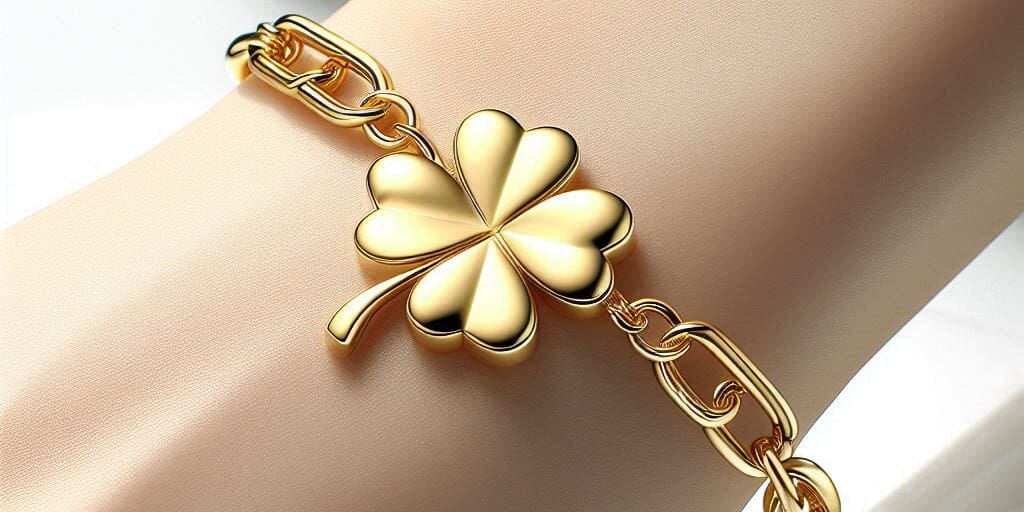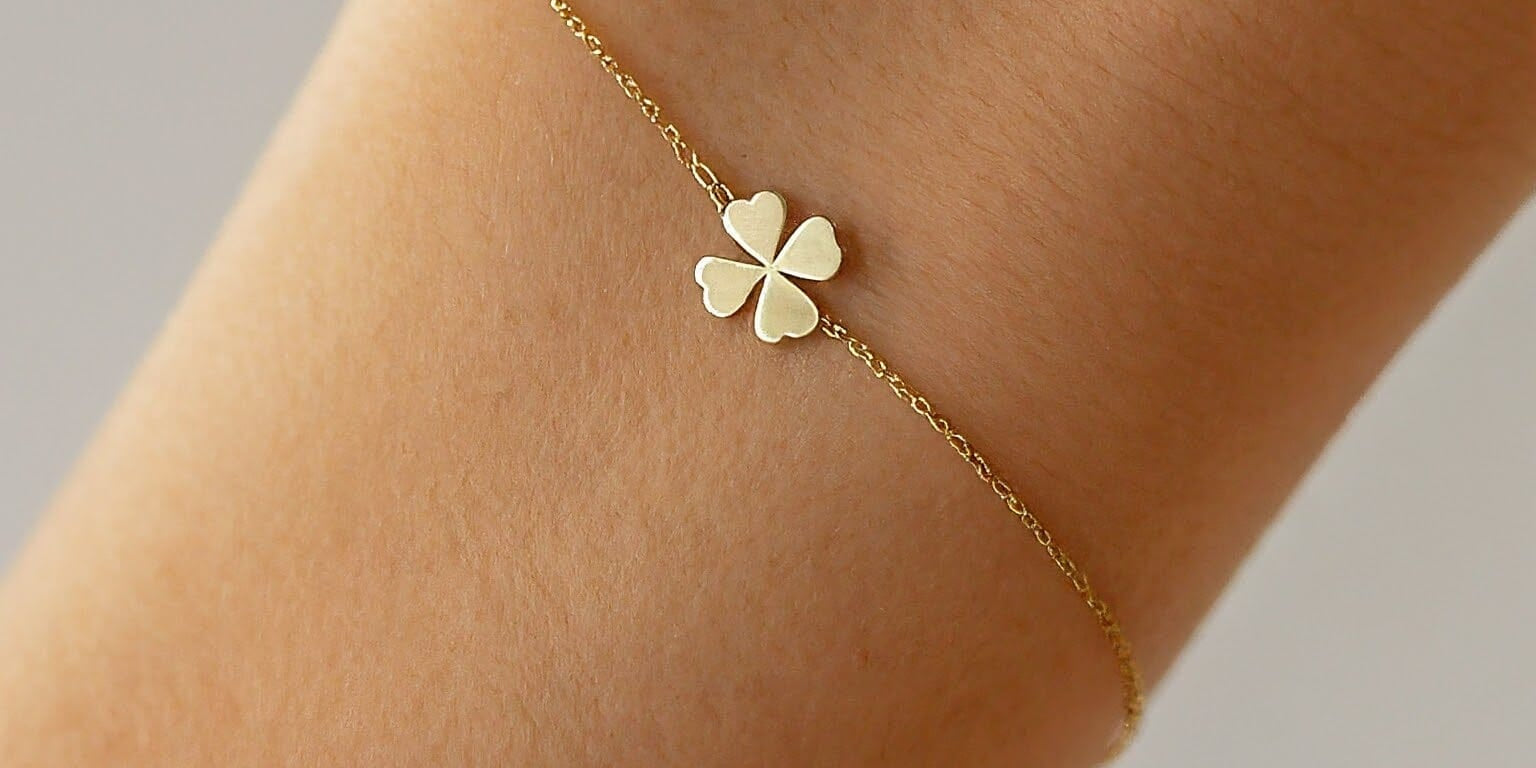Gold's lustrous gleam captures the eye, becoming a symbol of enduring beauty. Yet, even the finest gold-filled pieces can succumb to unsightly tarnish over time.
Protecting these treasures from the ravages of tarnish calls for proactive measures - the key to preserving their original allure for years to come.
Understanding Gold Filled Jewelry
Gold-filled jewelry stands as a prudent choice for those seeking the opulent appearance of solid gold without the substantial price tag. This craftsmanship involves bonding a layer of genuine gold to a base metal, typically brass, resulting in a piece that can withstand the test of time with appropriate care. Unlike its gold-plated counterparts, gold-filled items contain a much thicker layer of gold, which significantly enhances their durability and resistance to tarnish.
To fully appreciate gold-filled jewelry, one must comprehend the meticulous process known as "pressure bonding". A substantial amount of gold is permanently bonded to the base metal under heat and pressure. This fusion creates a resilient exterior that harbors the radiance of pure gold, yet offers a sturdier and more economical alternative. When properly maintained, the outer layer provides substantial protection against the environmental factors that lead to tarnish, making it a preferred option for jewelry that endures daily wear.
Composition and Durability
Gold-filled jewelry strikes an exquisite balance between longevity and aesthetic appeal, offering a durable option that closely mimics pure gold. The layered structure actively resists wear, safeguarding the lustrous finish against the ravages of time.
Employing a substantial gold layer pressure-bonded to a base, gold-filled jewelry transcends mere surface treatments like gold-plating. This results in a confluence of beauty and brawn; a work of art that melds opulence with practical durability, effectively resisting the tarnishing that plagues lesser materials.
Gold-filled jewelry contains 100 times more gold than gold-plated pieces, accentuating both value and virtue.
Considering its crafted durability: gold-filled jewelry combines the allure of solid gold with a resilience that belies its elegance. With proper care, its thick gold exterior repels tarnish (unlike thinner gold-plated items), asserting gold-filled jewelry as a sound investment for both beauty and longevity. Its endurance is its hallmark.
Tarnish Causes in Gold Filled Pieces
Environmental factors such as humidity and pollutants are primary culprits behind tarnishing in gold-filled jewelry, disrupting its radiant sheen.
Frequent contact with lotions and perfumes accelerates tarnish formation.
The makeup of an individual's skin, including pH levels and natural oils, can react with gold-filled materials, resulting in tarnish and a diminished luster over time.
One must also consider exposure to household chemicals and chlorinated water, which can erode the gold layer, revealing the base metal, which is more susceptible to tarnish. Regular care and mindful storage are vital in preserving the jewelry's immaculate appearance and maximizing its resistance to tarnish's insidious grasp.
Proper Storage Techniques
To thwart tarnish, it is imperative that gold-filled jewelry is kept dry and isolated from other metals that may induce tarnishing through contact.
For optimal preservation, store your gold-filled pieces in a dark, cool environment, tucked away in individual soft cloth pouches or lined jewelry boxes to prevent scratches and reduce exposure to the air.
A silica gel packet included in the storage area acts as a desiccant, helping to maintain a moisture-free atmosphere.
Ideal Conditions for Preservation
Storing your gold-filled treasures in a controlled environment is essential to thwart the relentless advance of tarnish over time. Elevated humidity, often the nemesis of fine jewelry, accelerates tarnishing; thus, maintaining a low-humidity ambiance is key.
Jewelry should reside far from sunlight, whose rays can hasten tarnish. An environment obscured from light preserves luster and finish.
Proper aeration is indispensable, allowing the piece to breathe while being shielded from excessive moisture, which can lead to tarnishing. A balance must be struck; airflow must be sufficient to curtail dampness, yet the area should be enclosed enough to prevent pollution and airborne compounds tarnishing the jewelry.
A methodical approach to managing temperature is also imperative; excessive warmth can provoke reactions that culminate in tarnish. Therefore, storing gold-filled pieces in a location that avoids temperature extremes ensures their enduring beauty and brilliance. Temperature swings, even mild, can cause condensation and increase the potential for tarnish, making consistency in climate a subtle yet robust ally in the quest for preservation.
DIY Anti-Tarnish Solutions
Create a homemade protective coating easily.
Chalk, not renown as a jewel's companion, indeed, can be an ally. By placing pieces of ordinary chalk within the jewelry storage area, you create a desiccant environment. Chalk's inherent properties absorb moisture in the vicinity, staving off the humidity-related tarnishing that can dull the radiance of gold-filled treasures. Employ chalk as a silent sentry against the insidious creep of tarnish.
Store with care in sealed bags or cloths.
Employ silica gel packs, often found in shoe boxes. They act as moisture absorbers, providing a dry milieu for your cherished adornments. This tactic is straightforward—insert a pack alongside your jewelry within its resting place. It's a small measure, yet a nuanced stroke in the broader strategy to maintain the splendor of gold-filled pieces.
Use a mixture of household items for cleaning.
Baking soda and water can concoct a gentle cleanser, perfect for maintaining the appearance of gold-filled jewelry. It's imperative not to be abrasive in your cleaning methods, as the veneer of gold-filled jewelry, delicate by nature, may otherwise wear prematurely. Mix the ingredients into a paste, apply gently, then rinse with care, ensuring longevity of allure and luster.
Cleaning and Maintenance Routines
Institute a regimen where gentle wiping with a soft, lint-free cloth becomes part of your gold-filled jewelry's weekly ritual. This act serves as preventive maintenance, barring potential buildup of oils and other substances that could mar its gleaming surface. Carefully executed, this approach is a cornerstone in preserving the jewelry's pristine condition.
Always ensure that after exposure to water—be it handwashing or a sudden downpour—your jewelry is dried promptly and thoroughly. Moisture is a formidable adversary in the realm of tarnish, and leaving it on your gold-filled pieces can invite unwanted dullness and corrosion.
Regular Cleaning Practices
Gently cleanse with warm, soapy water to maintain your gold-filled jewelry's brilliance. Submersion should be brief, and drying, thorough.
Empower your jewelry's endurance against tarnish with a mild, non-abrasive detergent. Avoid chlorine and harsh chemicals, which can compromise gold-filled surfaces.
Employ a soft-bristled brush for intricate detailing; dislodge debris from crevices with care, ensuring your jewelry's intricate designs remain untarnished.
Introducing a specialized cleaning solution formulated for gold can enhance the vibrancy of your jewelry. Nonetheless, verify its compatibility with gold-filled items.
Embrace regular inspections of your gold-filled treasures. This habit will prompt timely cleanings, helping to avert the onset of tarnish.
Professional Care for Longevity
Proper storage is fundamental to prevent tarnishing. Gold-filled jewelry should repose in a dry, fabric-lined box where air exposure is limited.
To maintain the gleam of your gold-filled pieces, periodic professional cleanings are advisable. Experts utilize specialized equipment and solutions tailored for delicate gold-filled surfaces, bolstering your jewelry's resistance to tarnish. Between professional sessions, it is crucial to engage in meticulous home care to sustain the luster of your adornments.
In addition to rigorous upkeep, consider the benefits of tarnish-resistant bags or cloths for gold-filled items. These storage solutions are impregnated with elements that help mitigate the chemical reactions leading to tarnish, thus providing an extra shield for your jewelry.
Lastly, the discerning practice of promptly removing jewelry before engaging in activities known to accelerate tarnishing—such as swimming, bathing, or handling potent chemicals—is indispensable. By adopting these precautionary measures, one curtails the risk of deterioration, ensuring that your gold-filled adornments retain their radiant allure for years to come.
Lifestyle Measures to Prevent Tarnish
Maintain a disciplined approach to jewelry wear; this includes removing gold-filled pieces before exposure to water or chemicals. Such preemptive steps significantly extend the life and brilliance of your treasures.
Furthermore, as you ready yourself for bed, make it a habit to gently cleanse your gold-filled jewelry with a soft cloth. This will remove daily accumulation of oils and debris that can contribute to the dulling of the metal’s glow.
Invest in a dedicated jewelry box with a plush lining, ensuring your gold-filled pieces are nestled safely away from scratch-inducing elements. This enclosure shelters the jewelry from excessive air exposure, a common culprit in the tarnishing process.
Handling Jewelry with Care
To preserve the luster of gold-filled jewelry, handle each piece with meticulous care.
- Keep cosmetics away: Apply makeup, hairspray, and perfumes before donning your jewelry.
- Use soft cloths: Always use a gentle, non-abrasive cloth for cleaning and drying.
- Avoid harsh conditions: Remove jewelry during strenuous activities to prevent physical damage.
- Separate storage: Store each piece separately to avoid scratches and entanglement.
Minimizing contact with substances that accelerate tarnish is key.
Regular, gentle cleanings contribute to the enduring shine and prevent build-up that can be difficult to remove.
Avoiding Harmful Exposures
Gold-filled jewelry thrives away from detrimental environments that expedite tarnishing.
- Harmful Chemicals: Avoid contact with household cleaners and chlorinated water.
- Extreme Conditions: Keep your jewelry away from extreme temperatures and direct sunlight.
- Moisture and Humidity: Always remove jewelry before swimming or showering.
- Sweat: Take off your pieces before exercising or engaging in heavy perspiration activities.
- Cosmetic Products: Apply lotions, perfumes, and hair products before wearing your jewelry.
Proactive measures protect the radiant integrity of your gold-filled pieces.
Preventing tarnish preserves both the beauty and value of your jewelry collection.
